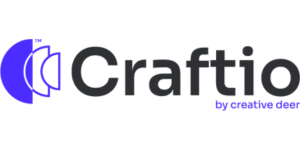
Managing Multiple Clients Efficiently: The Value of an All-Inclusive Design Platform
In today’s rapidly evolving digital landscape, agencies and teams often find themselves overwhelmed by the challenge of managing multiple clients and their distinct projects. The pressure of balancing various assignments, while striving to uphold high standards and adhere to stringent deadlines, can lead to significant stress and the risk of burnout. Fortunately, the emergence of comprehensive design platforms presents a practical solution to these persistent challenges. This guide will delve into the myriad ways these platforms can optimise workflows, conserve valuable time, and boost productivity, ultimately empowering you to handle your client workload with greater effectiveness and ease.
Challenges of Managing Multiple Clients
When juggling numerous client projects, agencies encounter a variety of formidable obstacles, each demanding careful attention. These challenges typically include:
1. Time Management
The sheer number of concurrent projects can create a chaotic work environment, making it exceedingly difficult to dedicate adequate time to each client. The art of prioritising tasks and ensuring that every deadline is met often feels insurmountable, as teams scramble to keep up with the demands of their diverse clientele.
2. Maintaining Quality
As workload increases, the risk of sacrificing quality becomes ever more pronounced. When teams find themselves stretched too thin, there is a looming threat that the output may fall short of the high standards expected by discerning clients, potentially damaging relationships and reputations.
3. Meeting Deadlines
Tight deadlines further exacerbate these challenges, often resulting in hasty work that undermines overall productivity and diminishes client satisfaction. Effectively managing timelines across several projects requires meticulous planning, thorough coordination, and an unwavering commitment to excellence.
Introduction to All-Inclusive Design Platforms
Enter the all-inclusive design platform—an innovative and holistic solution for agencies aspiring to manage their projects with unparallelled efficiency. These platforms function as a centralised hub for various design services, streamlining the process and enabling teams to oversee their diverse work more seamlessly. Craftio stands out as a prime example of such a platform, offering an extensive range of design services—from captivating graphic design and user-friendly web design to impactful marketing materials—all accessible from a single, user-friendly interface.
These comprehensive platforms integrate a variety of tools and resources that enhance collaboration, foster communication, and facilitate effective project management. By utilising these capabilities, teams can maintain their focus, stay organised, and deliver exceptional results, regardless of the number of clients they serve.

Key Benefits
Centralised Project Management
One of the most significant advantages of an all-inclusive design platform is centralised project management. With a single interface, teams can organise and monitor multiple projects simultaneously. This centralisation eliminates the need to switch between different tools, making project tracking and communication seamless.
Consistent Quality
When working with an all-inclusive design platform, teams can rely on a skilled design team to maintain high standards across all projects. This consistency in quality is crucial, as clients expect professionalism and uniformity in their branding and materials.
Unlimited Requests and Revisions
Many platforms offer unlimited design requests and revisions, which is invaluable for fast-paced client needs. This flexibility allows agencies to adapt quickly to client feedback, ensuring that the final product closely aligns with their vision without the constraints of traditional outsourcing methods.
Time and Cost Efficiency
An all-inclusive design platform significantly reduces the time spent on administrative tasks. By streamlining workflows, teams can focus on strategic work, such as developing creative ideas and enhancing client relationships.
Additionally, these platforms are often more cost-effective compared to hiring in-house designers or outsourcing tasks to various providers. When considering salaries, benefits, and the time spent managing multiple external vendors, the cost savings of an all-inclusive design platform become evident.
Improved Client Relationships
The advantages of utilising an all-inclusive design platform extend well beyond merely enhancing internal processes; they play a pivotal role in fostering stronger relationships with clients. By significantly reducing turnaround times and ensuring reliable project delivery, agencies can cultivate greater trust and satisfaction among their clients. In today’s fast-paced business environment, clients prioritise timely communication and consistency in delivery. An efficient design platform enables seamless interactions, which ultimately enriches the overall client experience and strengthens professional ties.
In-Depth Case Studies or Examples
To better illustrate the profound impact of all-inclusive design platforms in agency contexts, consider the following hypothetical scenarios.

1. Case Study 1
Global Marketing Campaign Management
An agency responsible for executing a comprehensive marketing campaign for a large, multi-national client was struggling to keep up with a barrage of design requests. The team was overwhelmed, resulting in delays and a drop in client satisfaction. After transitioning to an all-inclusive design platform, they were able to streamline their project management processes significantly. Within a matter of weeks, they reported a remarkable 30% reduction in project turnaround times. This improvement not only restored their client’s faith in their capabilities but also led to increased business from other divisions within the client’s company, thereby enhancing their reputation in the industry.
2. Case Study 2
Small Design Team Balancing Quality and Demand
A small design team was facing challenges in maintaining high-quality outputs while managing an influx of client demands. As the number of simultaneous projects grew, the team struggled to keep up without sacrificing quality. Upon integrating an all-inclusive design platform into their workflow, they gained the ability to manage unlimited revisions and requests efficiently. This shift allowed the design team to meet client expectations without compromising their standards. The improved quality of deliverables caught the attention of prospective clients, resulting in a significant uptick in new client acquisitions driven by positive word-of-mouth referrals from satisfied customers.
Conclusion
Adopting an all-inclusive design platform can revolutionise the way agencies handle multiple client projects simultaneously. This type of technology streamlines workflows, ensures consistency in quality, and fosters better communication among team members and clients alike. By addressing common challenges that teams face—from managing tight deadlines to facilitating effective collaboration—these platforms serve as invaluable tools in modern agency operations.
As you assess your current processes and workflows, it’s crucial to consider the potential benefits that platforms like Craftio could bring to your organisation. The digital landscape is perpetually evolving, and to stay competitive, you must adeptly manage the resources at your disposal. Embracing the opportunity to elevate your business could be just a platform integration away.
Take proactive steps today toward optimising your workflow and enhancing the way you manage client projects. By leveraging an all-inclusive design platform, you can ensure productivity, improve client relationships, and ultimately achieve your business objectives with greater efficiency.
